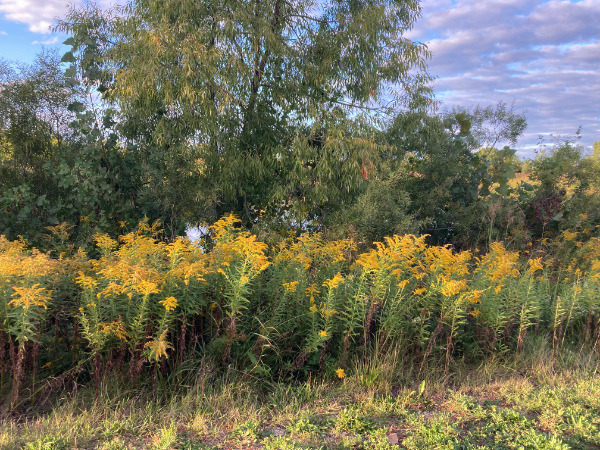
WORC September 2023 Program Recap
By Linda Gary, WORC President
Millennium Park Prairie Tour and Seed Collecting
There was a large crowd at Millennium Park for the September program focusing on prairies, seed collection, and winter sowing. Ginny Sines (Kent County Parks Volunteer Services Coordinator), Emily Padyjasek (Kent County Parks Volunteer Services Assistant) shared so much great information on the history of the park and its prairie. Barbara Zvirzdinis (Wild Ones River City Program Co-Chair) gave an interesting demonstration on how to plant native seeds in the fall; and overwinter them so the seedlings will be ready to transplant into your yard by spring. We were then able to walk through the prairie and collect seeds for our own landscapes or to donate to the Rogue River Park Prairie Restoration project.
Here are some of the highlights
Millennium Park:
- 1,500-acre park with an extensive trail network and variety of recreation opportunities
- We were encouraged to participate in a survey as the Kent County Parks Department is creating a new 5-year plan is decide how to dedicate their time and resources. You can tell them what parks, activities and experiences are important to you by taking the survey https://www.surveymonkey.com/r/ZJLKPG9
Prairie Restoration:
- In 2013, 10 acres were planted with native prairie forb and grass seeds from Cardno with many of the original species thriving today
- challenges include control/removal of invasive species (regular burning is preferred management technique but often hard to schedule due to weather conditions), climate change impacts prairie species survival, unauthorized seed harvesting can reduce seed bank, forb loss due to combination of all these factors.
Prairie Importance:
- Michigan has lost 99% of its original prairies, so it’s especially important to preserve what’s left and to restore what we can.
- Prairies are important because they…
- provide rare habitats for a diversity of pollinators and other wildlife
- act as a carbon sink → action against climate change
- have deep roots that prevent erosion and runoff, which leads to water pollution.
Winter Sowing:
- This is the process of planting seeds in a container and leaving them outside during the winter months.
- The container protects the seeds from animals and harsh weather and allows them to germinate naturally in the spring.
- Use recycled containers as they are easy and inexpensive i.e. plastic gallon milk jugs (cut around the middle leaving a side intact to make a hinge) and large plastic salad containers.
- Punch holes in the top (so rain/snow can get in) and bottom (for drainage), fill with at least 3–4 inches of potting soil (no soil with seed starter or weed killer or strong fertilizer, also garden soil may be too dense), wet it well, sprinkle the seeds on top and cover lightly with more soil, replace the top, (if using a milk jug, you can tape it shut with duct tape.) Then place container outside in a spot that gets rain/snow and a mix of sun and shade.
- Watch for sprouts in the spring!
Walking through the prairie to collect seeds after the speakers were finished was a perfect way to spend a warm autumn evening. The grasses and forbs were quite beautiful in the soft golden light.

